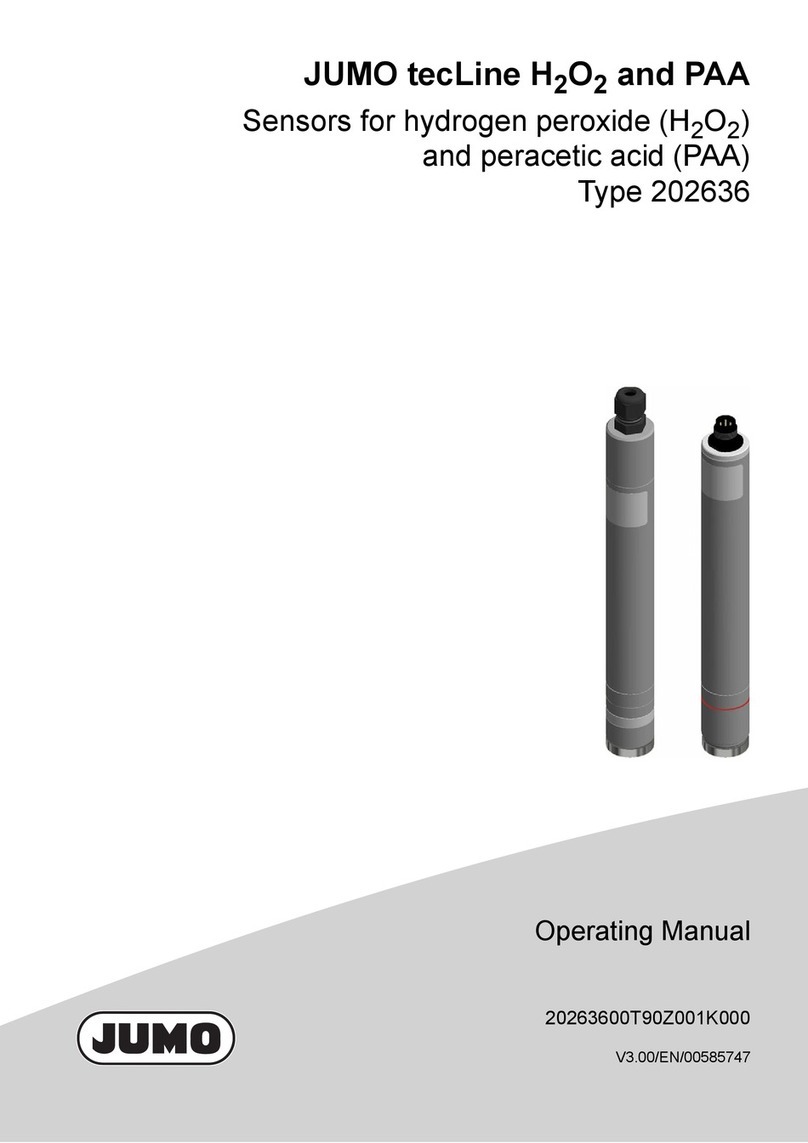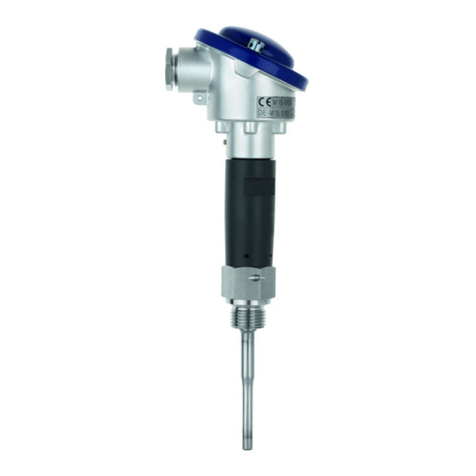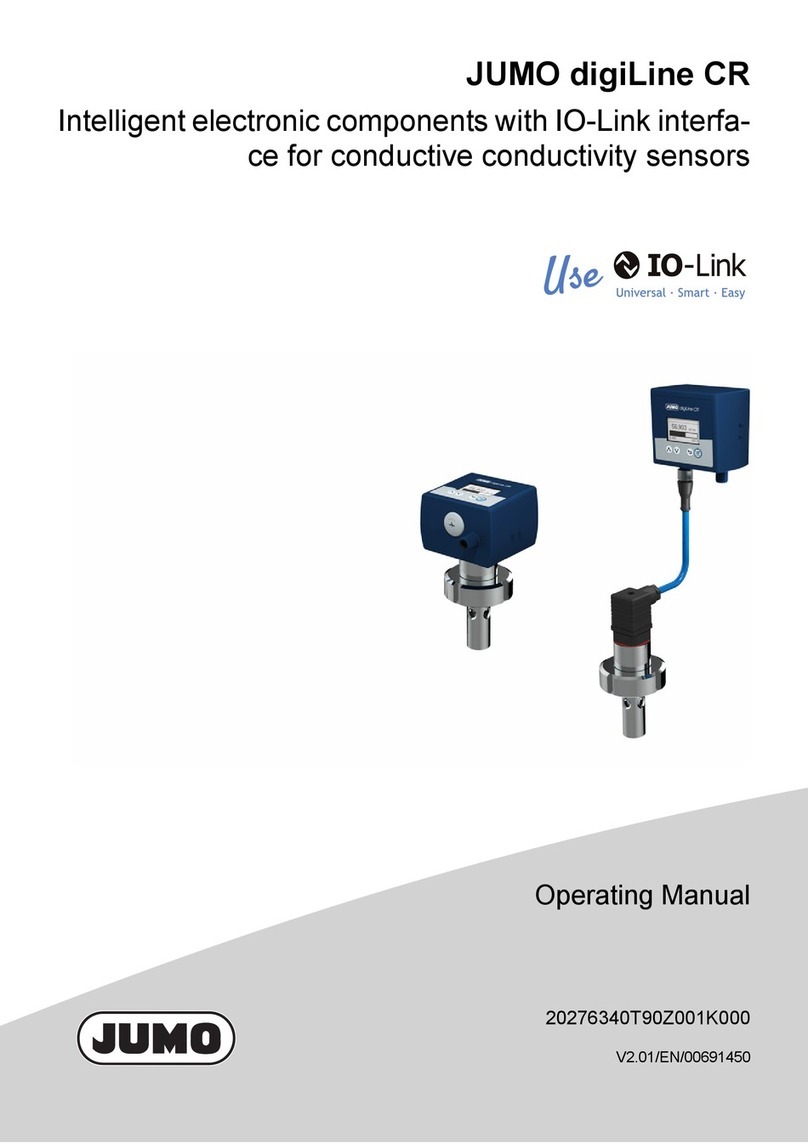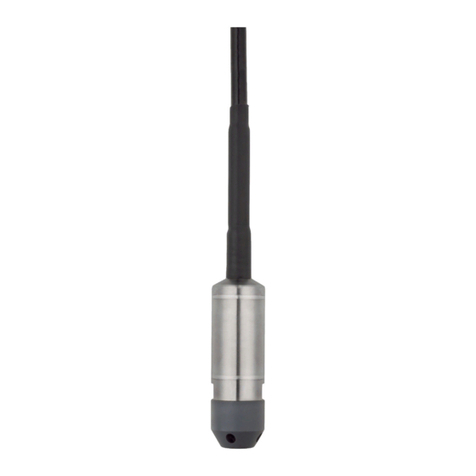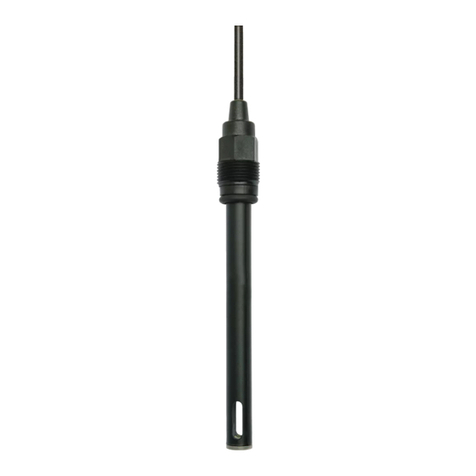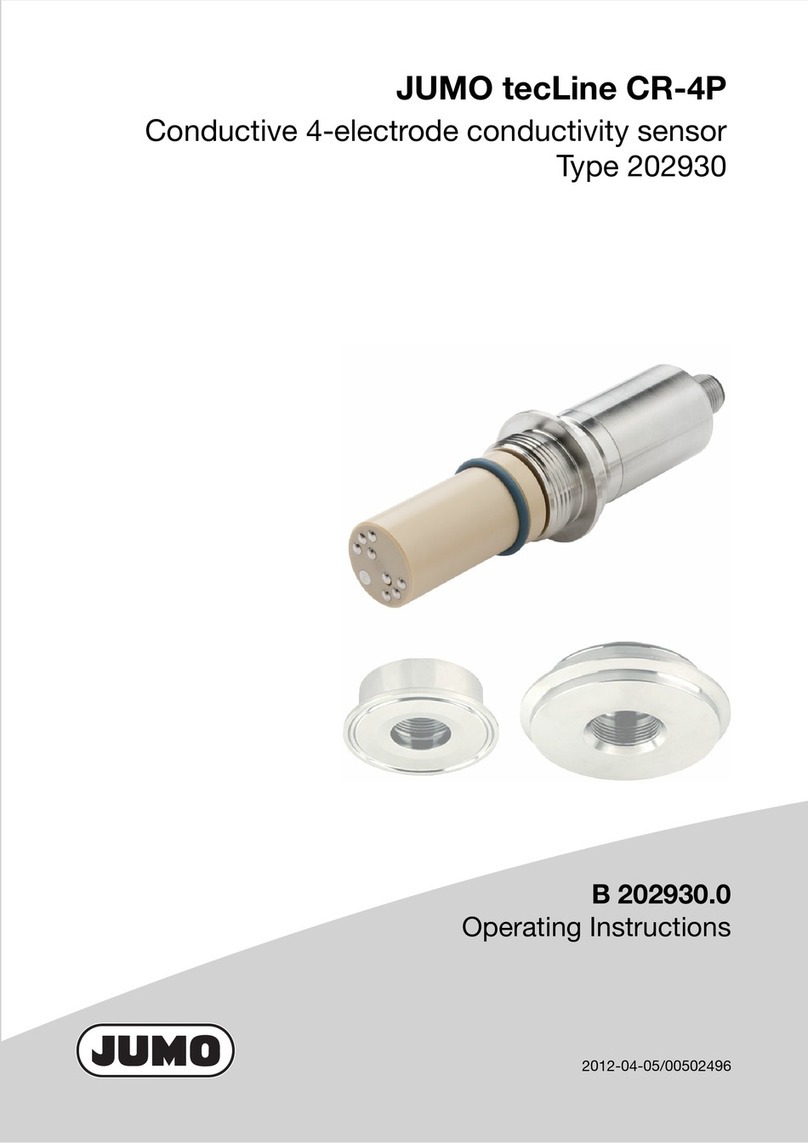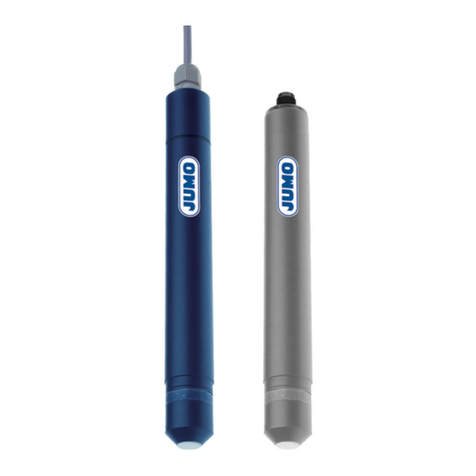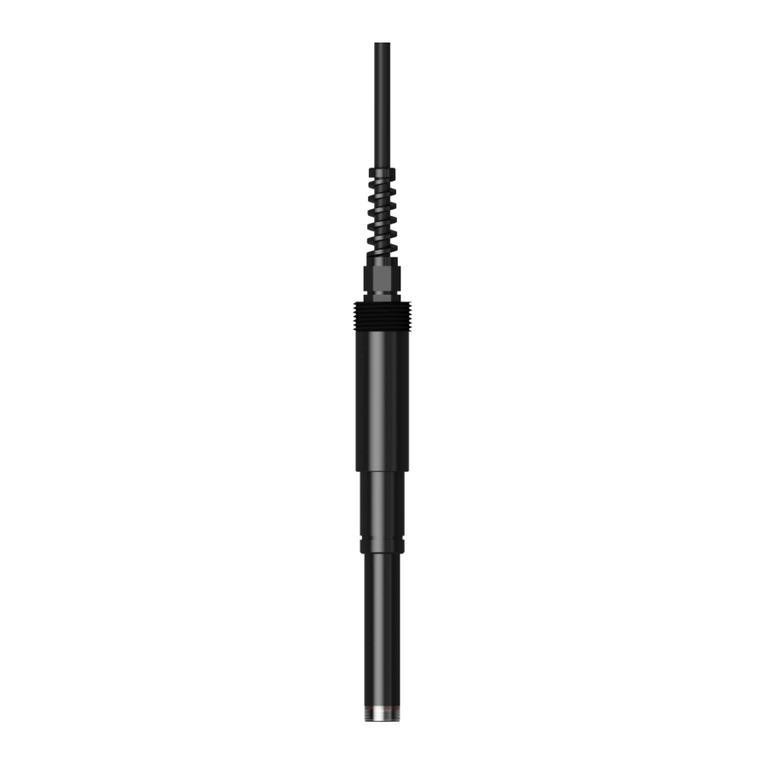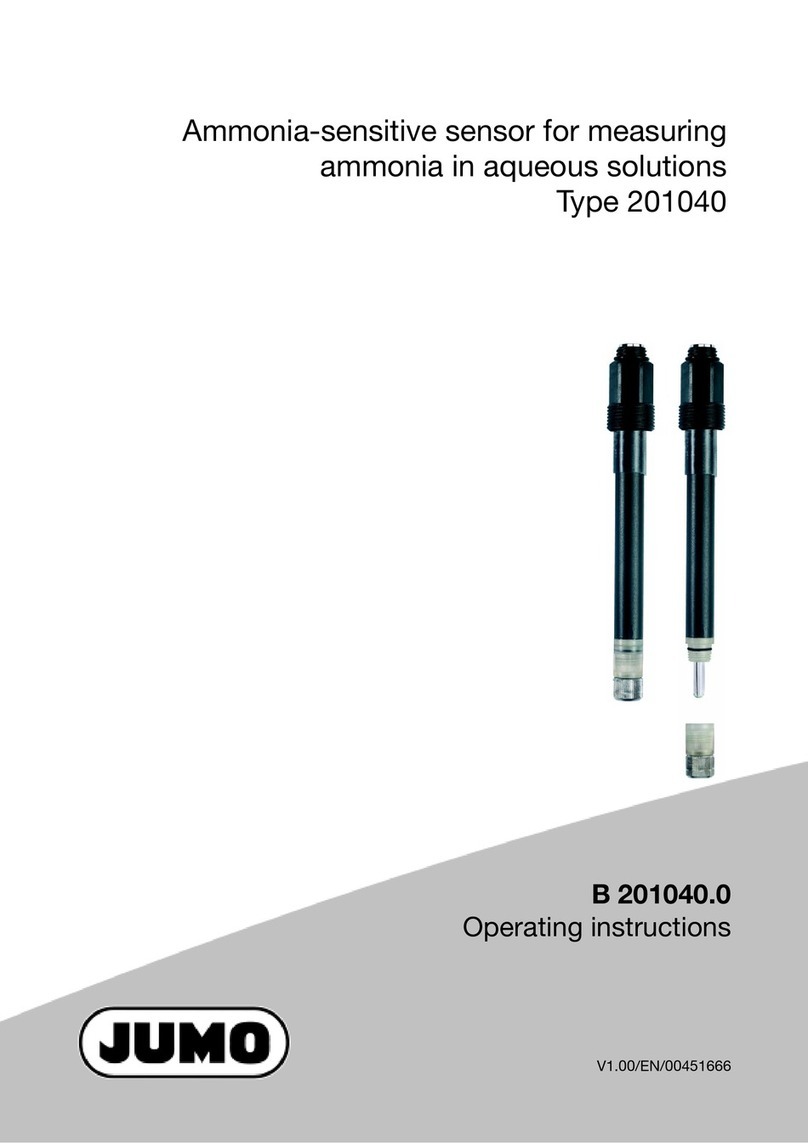
8
4 Description
4.1 Scope of delivery
Two-wire sensor with membrane cap, electrolyte and special abrasive paper
for cleaning the electrode finger.
4.2 Sensor for chlorine dioxide - type 202634/45
This sensor features a membrane-covered, amperometric 2-electrode
measuring system.
The membrane of this sensor is made of hydrophobic, microporous PTFE
material. These sensors should only be used in water with drinking or
swimming pool quality. The water should not under any circumstances contain
surfactants (many cleaning agents and disinfectants contain surfactants).
Surfactants will eliminate the hydrophobic properties of the membrane. Then
proper functioning can no longer be guaranteed.
The membrane cap that seals off the electrode space is filled with an aqueous
electrolyte containing alkali halides.
The working electrode (cathode) is made of gold (Au). The anode, which
performs the function of a combined reference electrode and counter
electrode, is made of silver (Ag) fitted with a coating of silver halide (AgHal).
The sensor for chlorine dioxide can be used to measure chlorine dioxide from
chlorite/chlorine and chlorite/hydrochloric acid plants.
4.3 Sensor for chlorine dioxide - type 202634/46
(resistant to chemicals and surfactants)
The sensor measures chlorine dioxide from chlorite/chlorine plants and
chlorite/hydrochloric acid plants.
4.4 Sensor for ozone - type 202634/50
This sensor features a membrane-covered, amperometric 2-electrode
measuring system.
The membrane of these sensors is made of hydrophobic, microporous PTFE
material. This sensor should only be used in water with drinking or swimming
pool quality. The water should not under any circumstances contain
surfactants (many cleaning agents and disinfectants contain surfactants).
Surfactants will eliminate the hydrophobic properties of the membrane. Then
proper functioning can no longer be guaranteed.
The membrane cap that seals off the electrode space is filled with an aqueous
electrolyte containing alkali chlorides.
The working electrode (cathode) is made of gold (Au). The anode, which
performs the function of a combined reference electrode and counter
electrode, is made of silver (Ag) fitted with a coating of silver halide (AgHal).
The sensor for ozone can be used to measure electrolytically generated
ozone.
